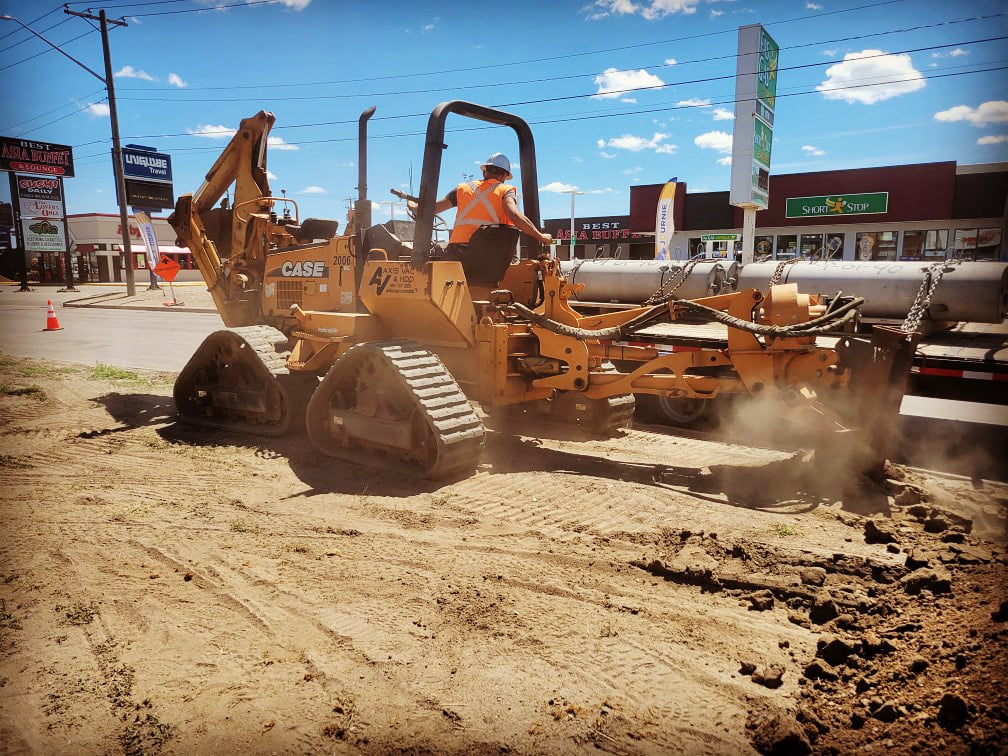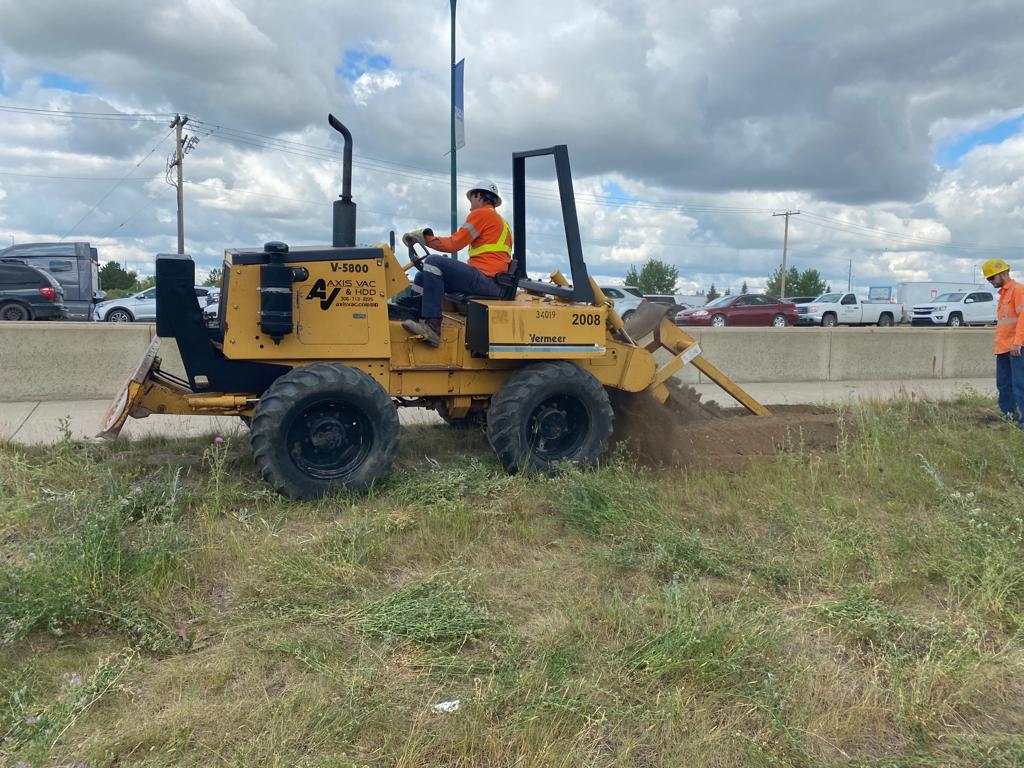
Plowing and Trenching
Plowing and trenching are cornerstone activities in the utilities installation and maintenance industry. When something needs to get from point A to point B underground, more often than not (unless, of course, you drill straight to it) it means that you’ll need to dig a trench.
What is Trenching?
Technically speaking, a trench is defined as an excavation that has a depth longer than its width. In practice, trenching can be accomplished using a variety of machines and tools weilded by skilled operators.
Trenching is most commonly used when installing utility lines, like telecom cables (including fibre) or conduits, electrical lines, water and sewer pipes and connections, and other long narrow pieces of utility infrastructure that can’t or shouldn’t be connected aerially.

Trenching, like other forms of excavation, requires a great deal of planning and preparation before starting the dig. Knowing what type of ground (soil, rock, mud, pavement) you’re dealing with and what challenges it may present is critical. Understanding the soil and any rock deposits will help make sure your trench is dug smoothly.
What is Plowing?
Plowing is similar to trenching in that the end result is a utility line of some kind buried underground and connected between two points. Plowing differs from trenching in both how the line is inserted underground and the tools and techniques used to get it there.
Cable plows use special vibrating blades to cut a narrow split in the ground. The cable or duct being buried is fed down through the blade and spooled out in real time as the plow cuts the trench. Workers can then follow along and re-pack the soil that has been brought up by the plow quickly and efficiently.
Cable plowing is quick and creates minimal disturbance to the surrounding environment and original surface area.
Questions about trenching or plowing? Don’t hesitate to get in touch with Axis Vac & HDD. We’re here to help.
